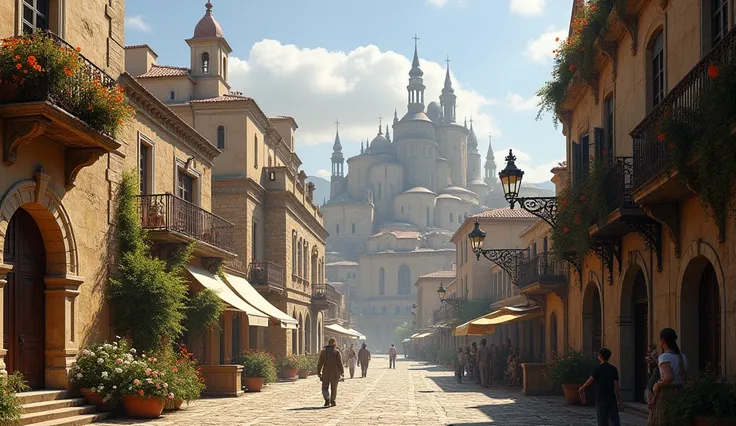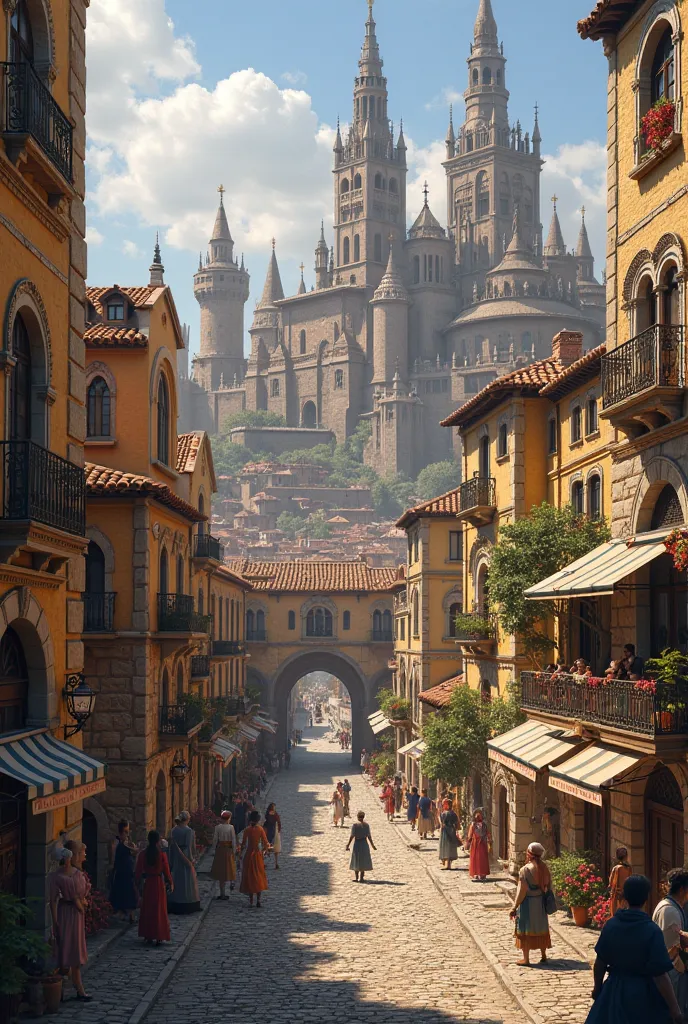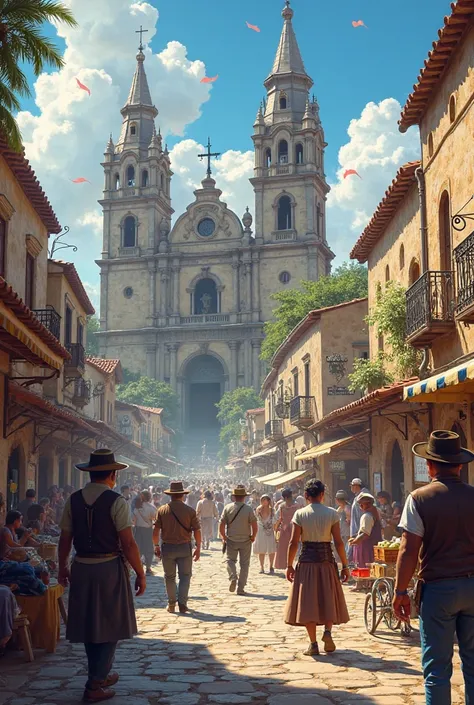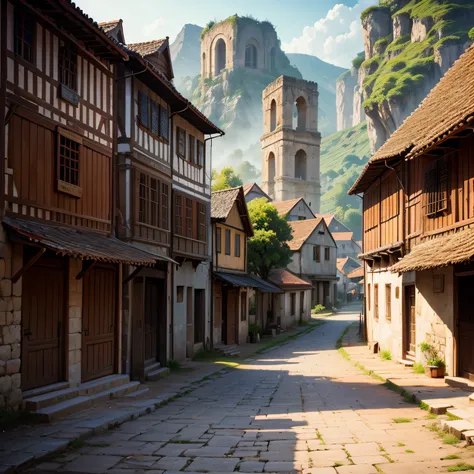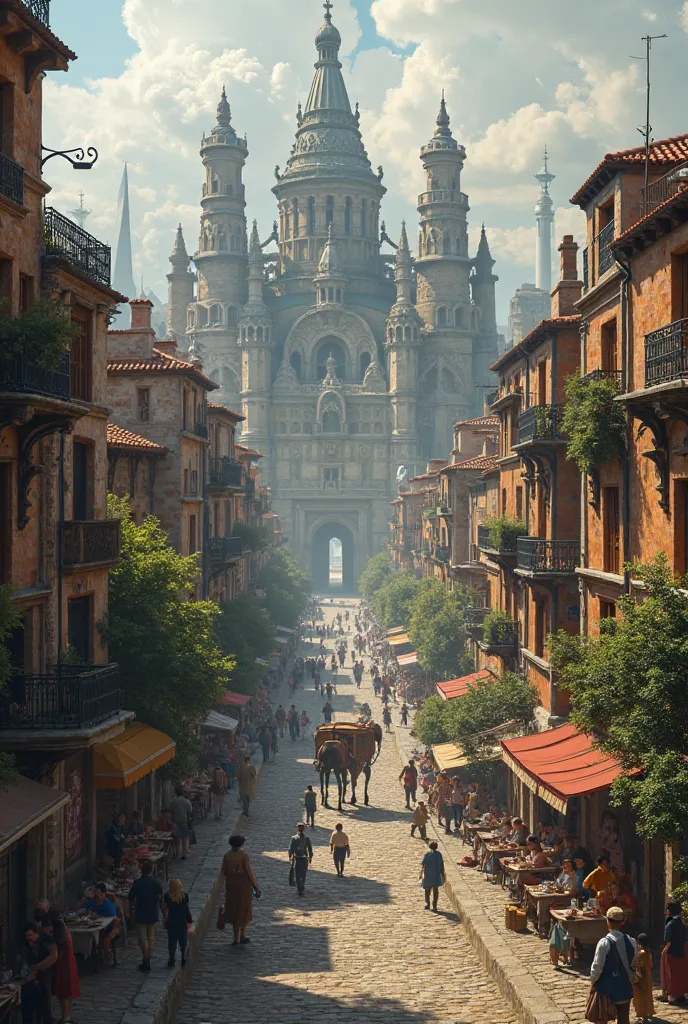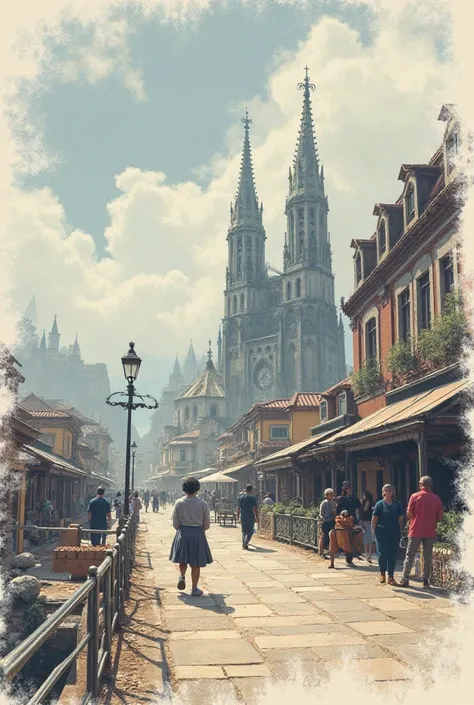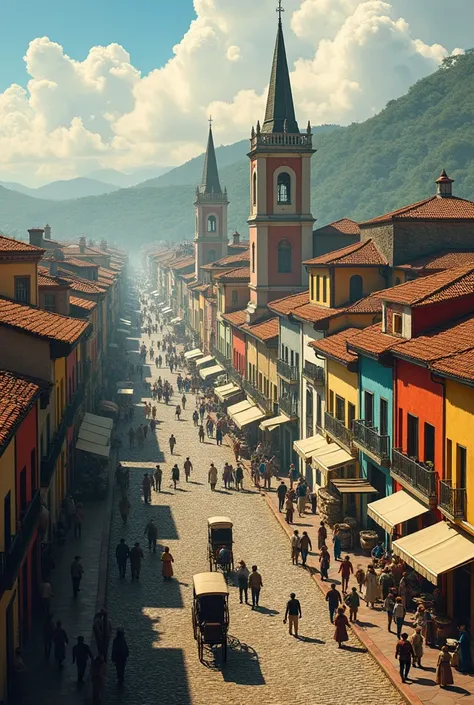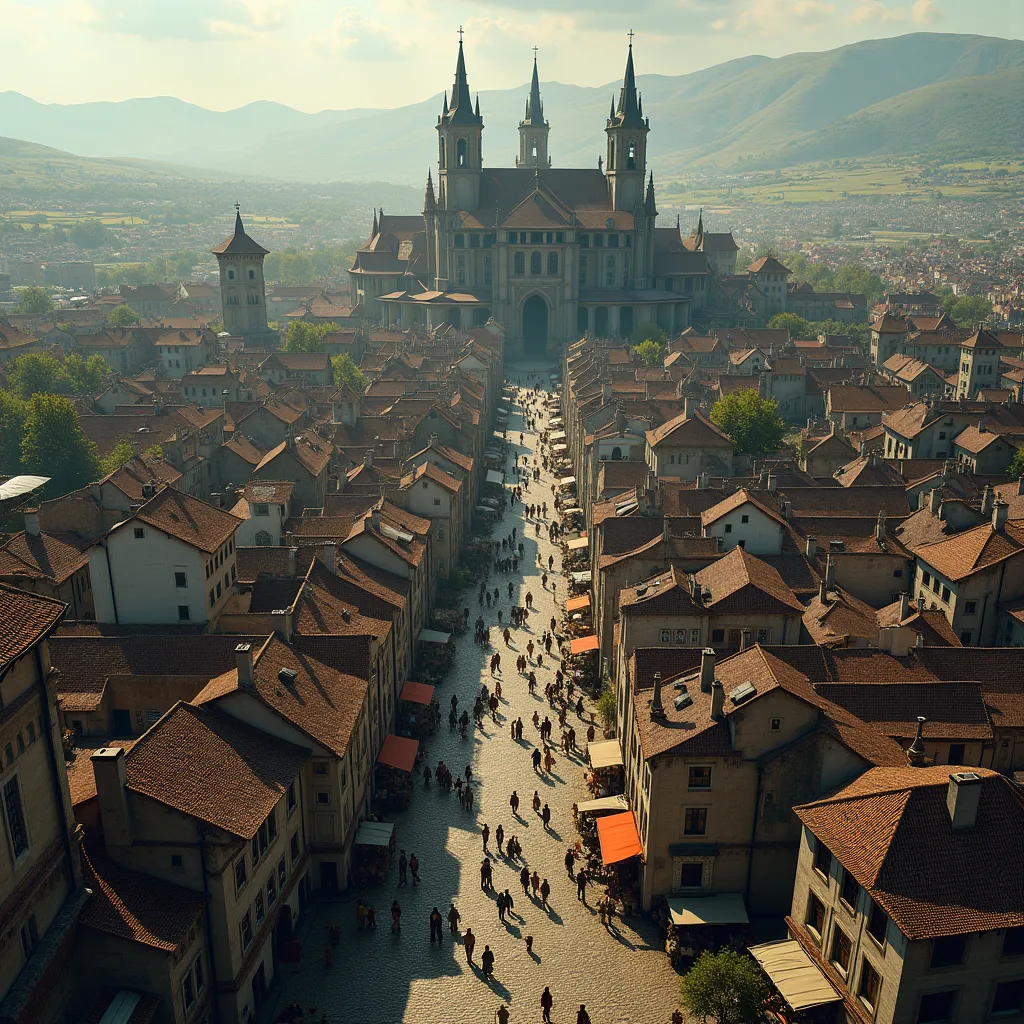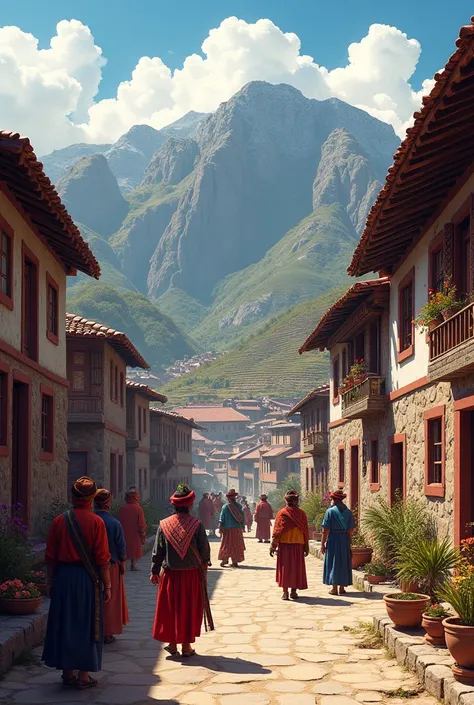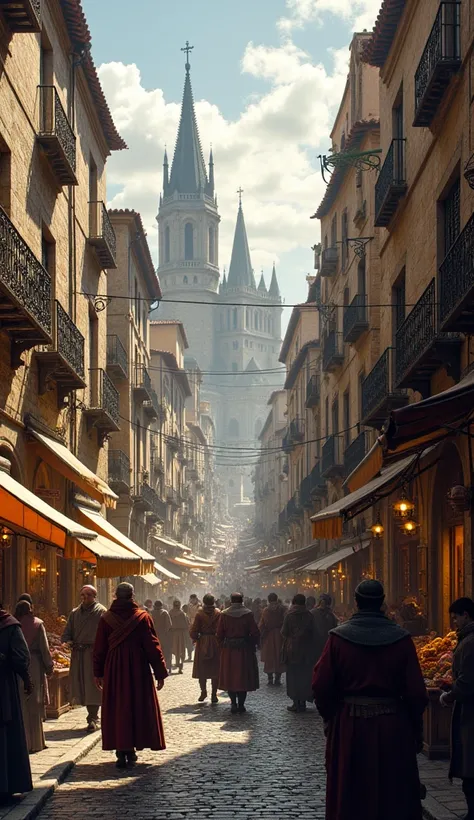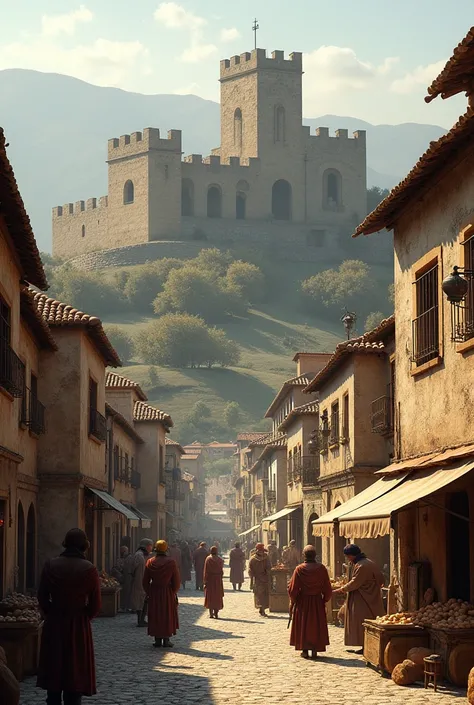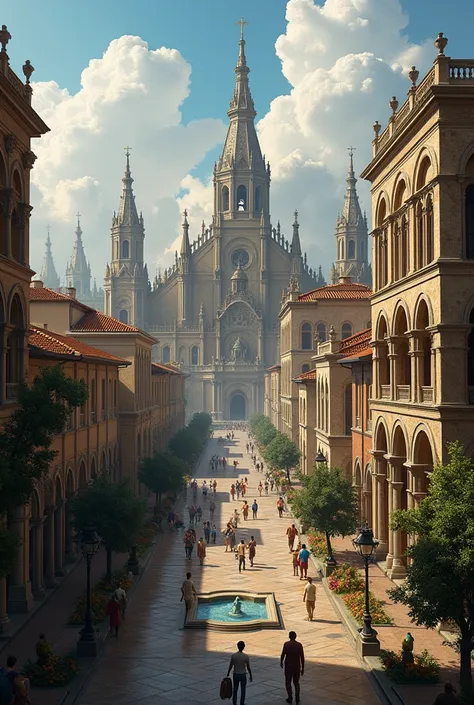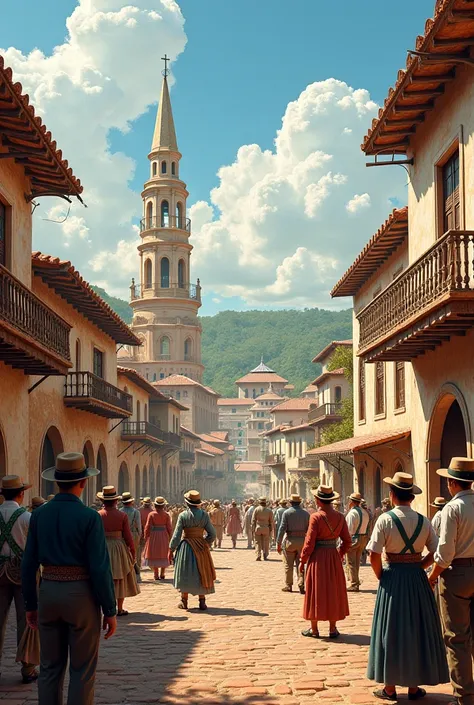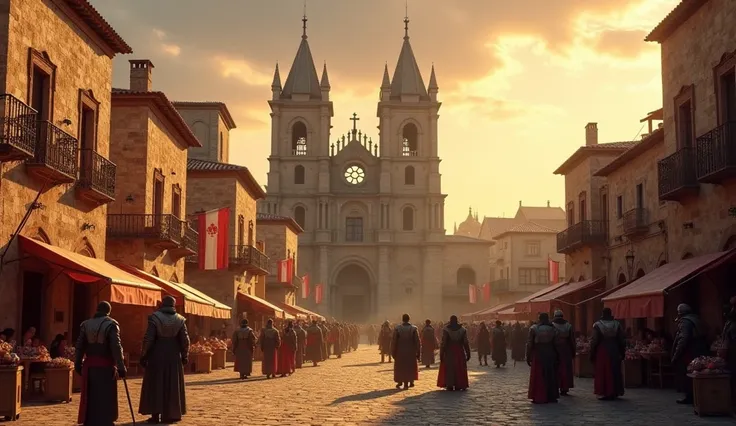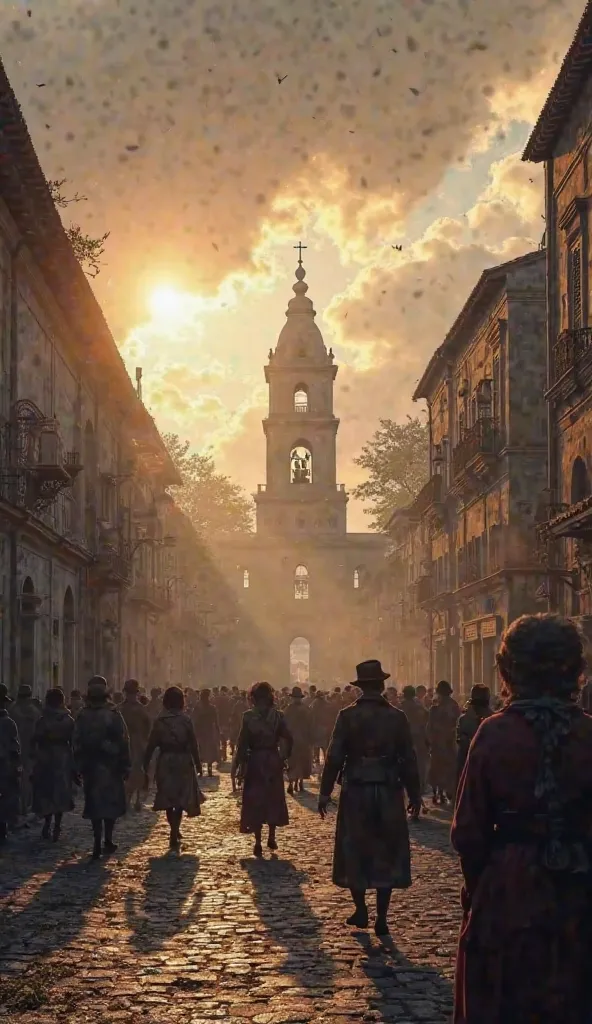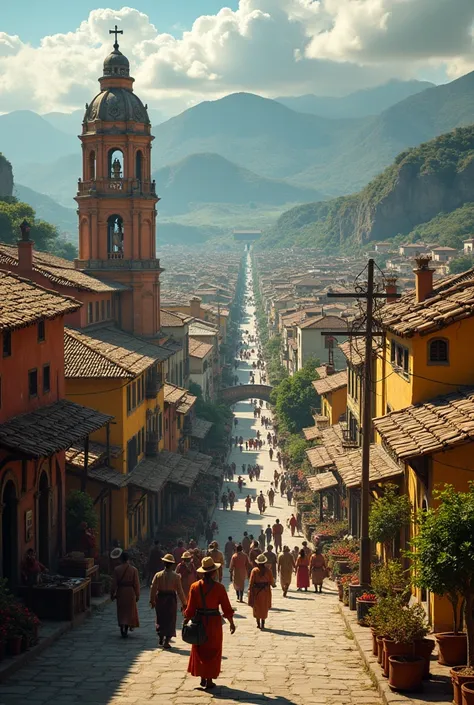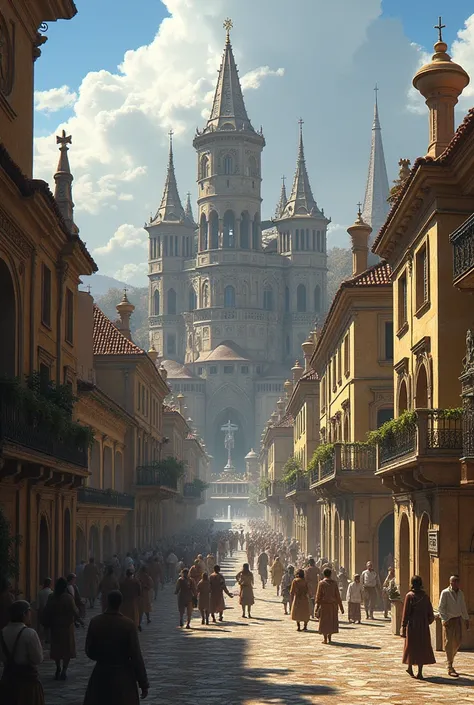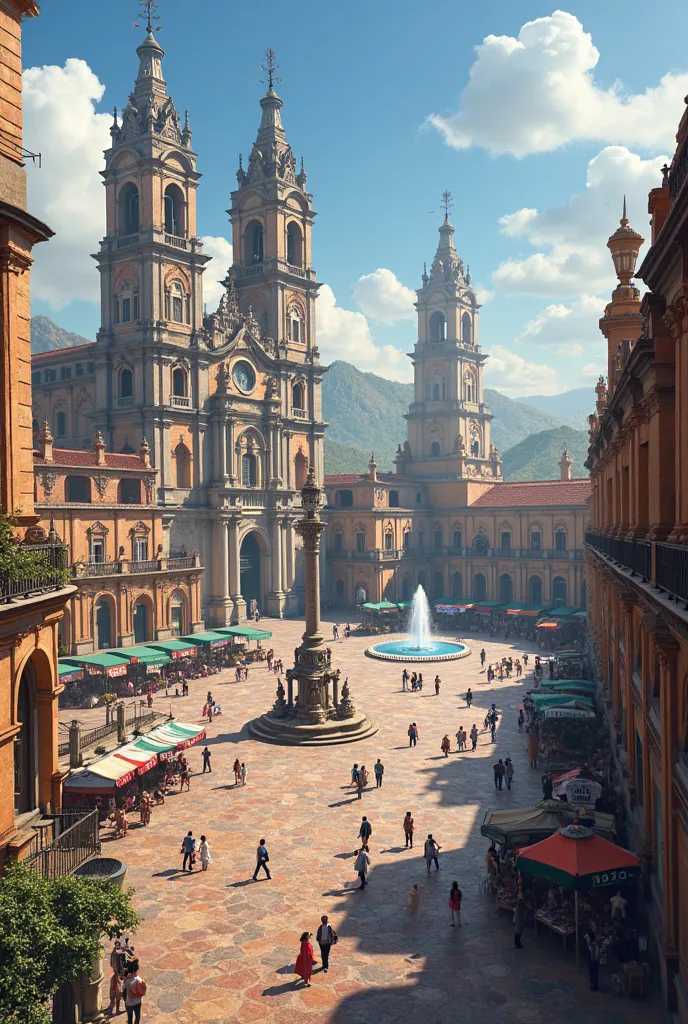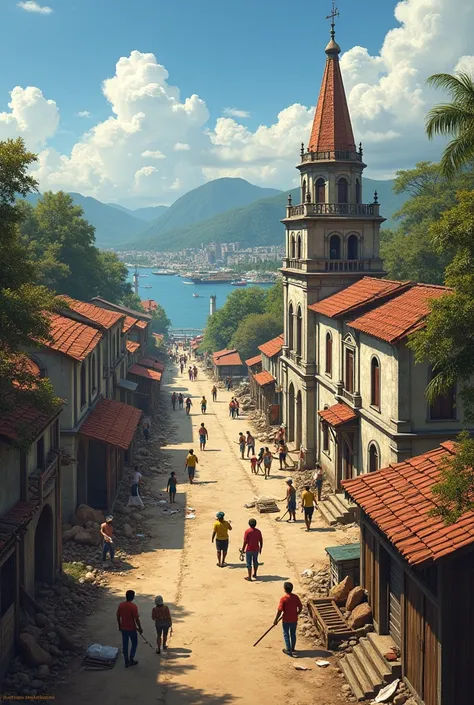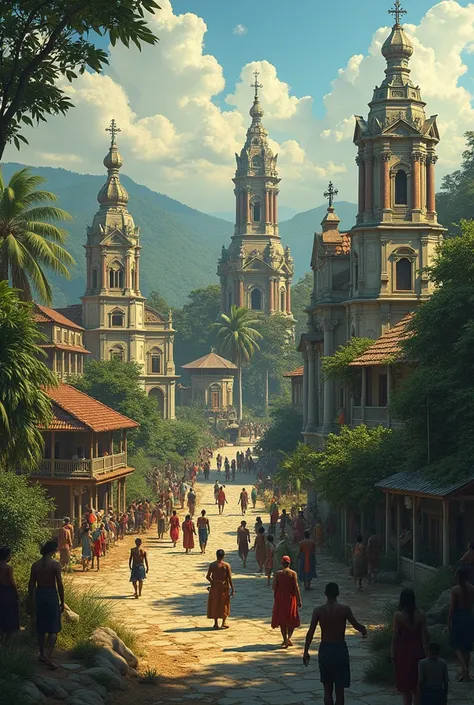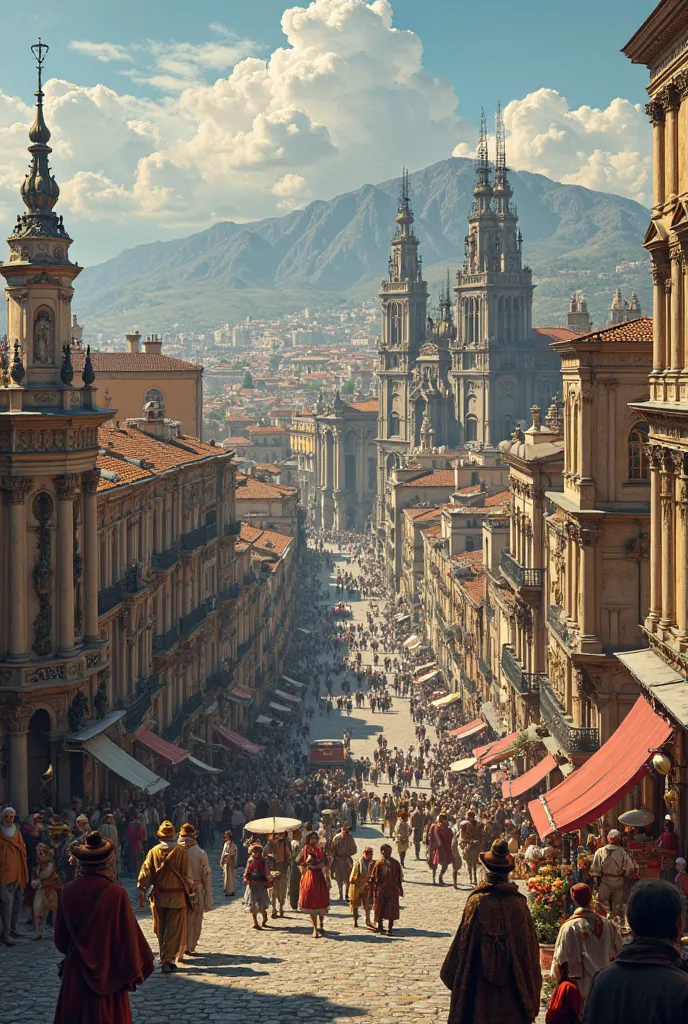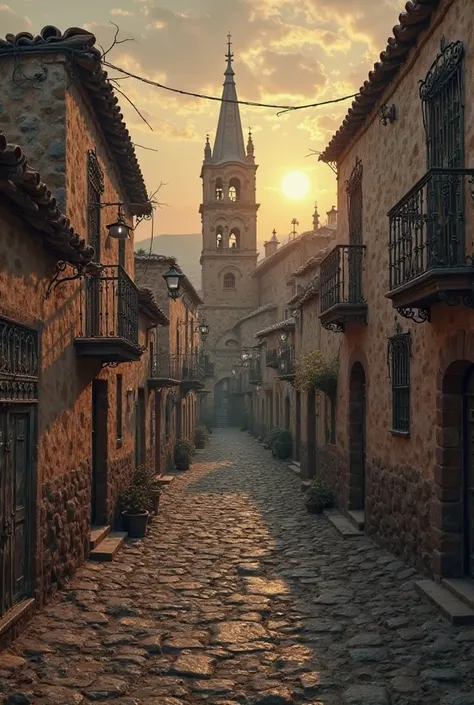"Visualize Metro Manila in 1861, a bustling yet evolving colonial capital under
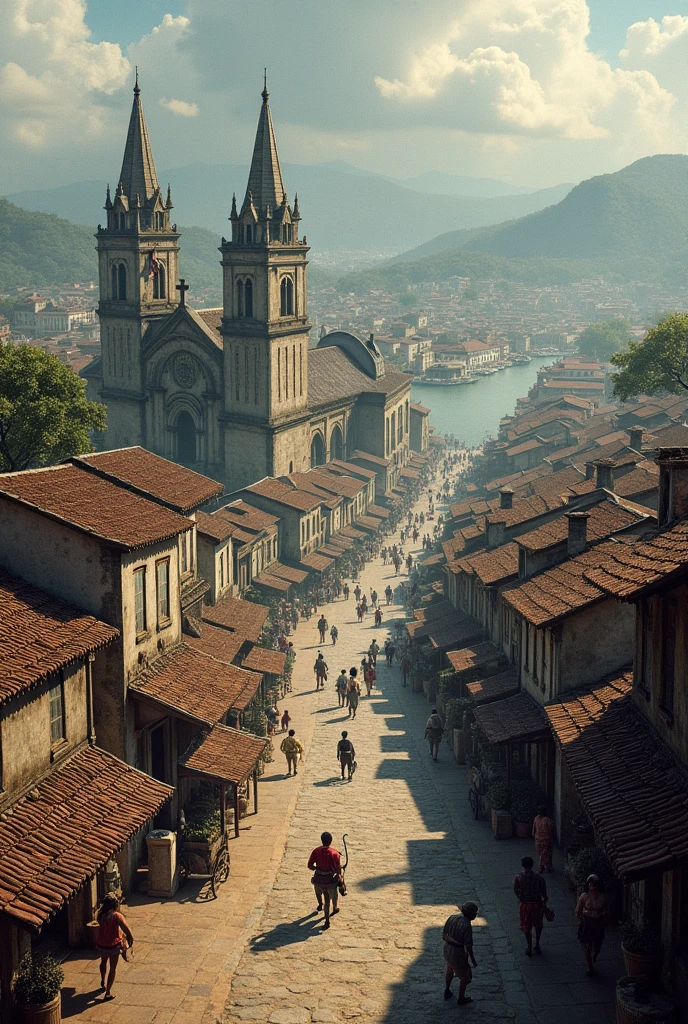
"Visualize Metro Manila in 1861, a bustling yet evolving colonial capital under Spanish rule. The cityscape is a mix of Spanish colonial architecture and local Filipino influences. Intramuros, the walled city at the heart of Manila, stands prominently with its fortified walls, narrow cobblestone streets, and grand stone buildings, including churches, government offices, and residences of Spanish officials. The San Agustin Church, with its baroque architecture, is a notable landmark within the walls. Outside Intramuros, along the Pasig River, are the busy districts of Binondo, Tondo, and Sta. Cruz, where commerce thrives. Binondo, known as the world's oldest Chinatown, is filled with Chinese merchants, trading goods in bustling markets. The streets are lively, with horse-drawn carriages (kalesas) moving along unpaved roads, and people from various walks of life—mestizos, Spanish elites, Chinese traders, and native Filipinos—conducting their daily business. Houses in the surrounding areas, known as bahay na bato, are built with stone on the ground floor and wood on the upper levels, with wide windows adorned with capiz shells. The riverbanks are lined with small boats (bancas) and larger vessels, contributing to the active trade along the Pasig River. Surrounding the urban areas are agricultural lands, rice fields, and small farming communities, with the greenery gradually giving way to the jungles and mountains beyond the city's outskirts. The overall atmosphere of Manila in 1861 is one of cultural blending and economic activity, set against a backdrop of colonial rule, with the lingering presence of Spanish power evident in the architecture, governance, and social hierarchy."
提示詞
復製
"Visualize Metro Manila in 1861
,
a bustling yet evolving colonial capital under Spanish rule
.
The cityscape is a mix of Spanish colonial architecture and local Filipino influences
.
Intramuros
,
the walled city at the heart of Manila
,
stands prominently with its fortified walls
,
narrow cobblestone streets
,
and grand stone buildings
,
including churches
,
government offices
,
and residences of Spanish officials
.
The San Agustin Church
,
with its baroque architecture
,
is a notable landmark within the walls
.
Outside Intramuros
,
along the Pasig River
,
are the busy districts of Binondo
,
Tondo
,
and Sta
.
Cruz
,
where commerce thrives
.
Binondo
,
known as the world's oldest Chinatown
,
is filled with Chinese merchants
,
trading goods in bustling markets
.
The streets are lively
,
with horse-drawn carriages (kalesas) moving along unpaved roads
,
and people from various walks of life—mestizos
,
Spanish elites
,
Chinese traders
,
and native Filipinos—conducting their daily business
.
Houses in the surrounding areas
,
known as bahay na bato
,
are built with stone on the ground floor and wood on the upper levels
,
with wide windows adorned with capiz shells
.
The riverbanks are lined with small boats (bancas) and larger vessels
,
contributing to the active trade along the Pasig River
.
Surrounding the urban areas are agricultural lands
,
rice fields
,
and small farming communities
,
with the greenery gradually giving way to the jungles and mountains beyond the city's outskirts
.
The overall atmosphere of Manila in 1861 is one of cultural blending and economic activity
,
set against a backdrop of colonial rule
,
with the lingering presence of Spanish power evident in the architecture
,
governance
,
and social hierarchy
.
"
信息
模型 & 風格

模型
SeaArt Infinity
#攝影
#場景設計
#SeaArt Infinity
共 0 條評論
0
0
0










